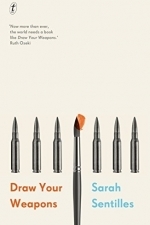
Grand Designs Handbook: The Blueprint for Building Your Dream Home
Book
TV's architecture and design guru Kevin McCloud shares his passion and expertise in this brilliant...

Fantastiqa
Tabletop Game
Welcome to the wild, weird world of FANTASTIQA! Fantastiqa is a deck-building board game set in a...

Piano - Play Magic Tiles Game
Music and Entertainment
App
Piano by Gismart is an electric keyboard simulator app with virtual musical instruments to help you...

Magic Piano: Music Tiles 2
Games
App
Play the best Piano White Tiles on your iPhone & iPad now! FOR FREE! Have you ever dreamed of...
graveyardgremlin (7194 KP) rated Kilmeny of the Orchard in Books
Feb 15, 2019
I went into Kilmeny of the Orchard expecting a sweet love story, which is basically what I got, but I wanted to love the book and unfortunately only ended up finding it so-so. The writing was as lovely as you would expect from L.M. Montgomery and the descriptions brought a certain life to most scenes. However, while I enjoyed the story for the most part, I didn't become immersed into either it or the characters. This may have to due with how perfect both Eric and Kilmeny were and there was really no "impossible obstacles" to overcome (as the book put it). While I expected a slight fairy tale feel to the book, I was disappointed that there really wasn't depth to the overall story or the characters, especially whenever Eric thought about Kilmeny it was mostly to mention her looks or how innocent and without guile she was. Okay, so it's a new love and his first true love, but a little more interaction rather than rhapsodizing over her perfections would have been preferable. Because the book is a product of a different time and place, a few remarks about "foreigners", such as Neil Gordon who was born in Lindsay to Italian peddlers, Kilmeny's "defect", and other mindsets stood out. I wouldn't say they alienated me from the book but they occasionally took me out of the story. Even though I understand those views in context to the time this was written, it can still be a hard adjustment for a modern reader. So while this was at times a nice read, it's hardly something I'll remember back upon.

Draw Your Weapons
Book
A single book might not change the world. But this utterly original meditation on art and war might...
philosophy social sciences

Score Creator: compose music
Music and Entertainment
App
Score Creator is a musical composition application that is specially designed for mobile platform....

GuitarTuna – Tuner for Guitar, Bass and Ukulele
Music and Education
App
GuitarTuna is the easiest, fastest and most accurate tuner app in the world! The ultimate tuner for...

The United Methodist Hymnal
Book and Music
App
This is the official iPad edition of The United Methodist Hymnal (1989) authorized by The United...

South American Handbook
Book
South America will uplift your senses with the tropical sun rising over a palm-fringed beach, or a...
